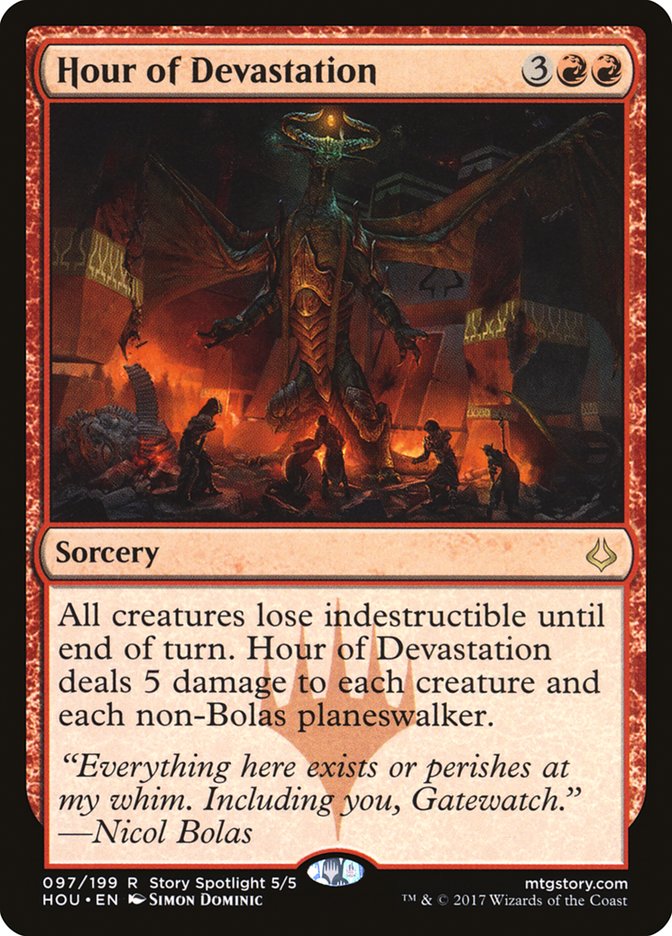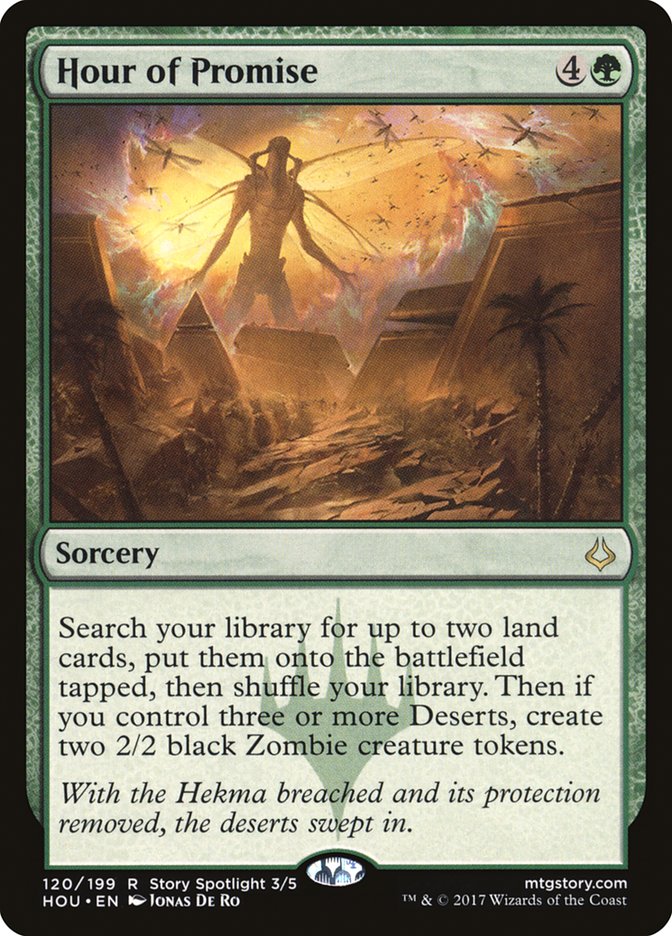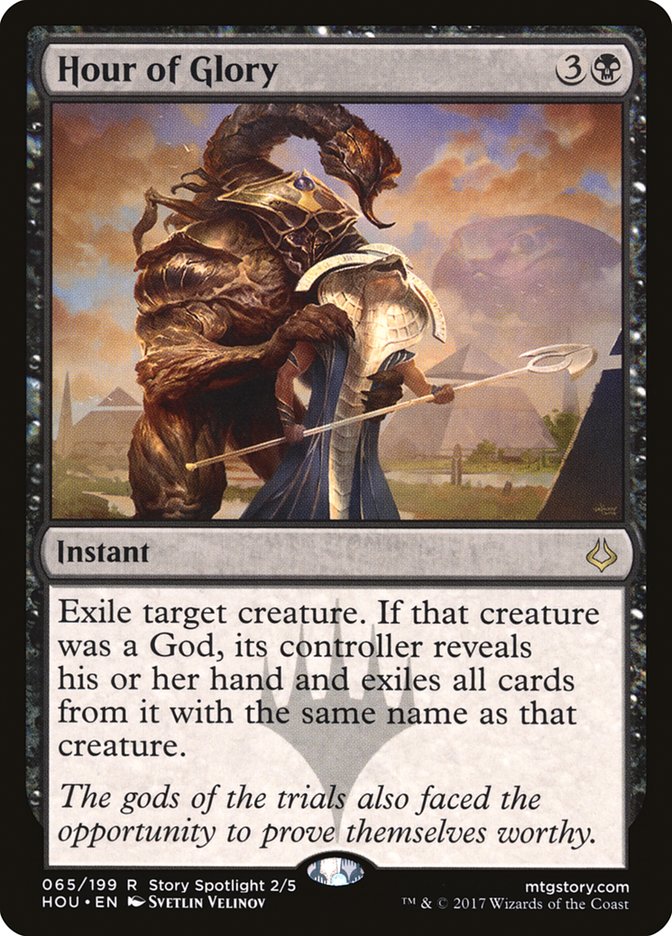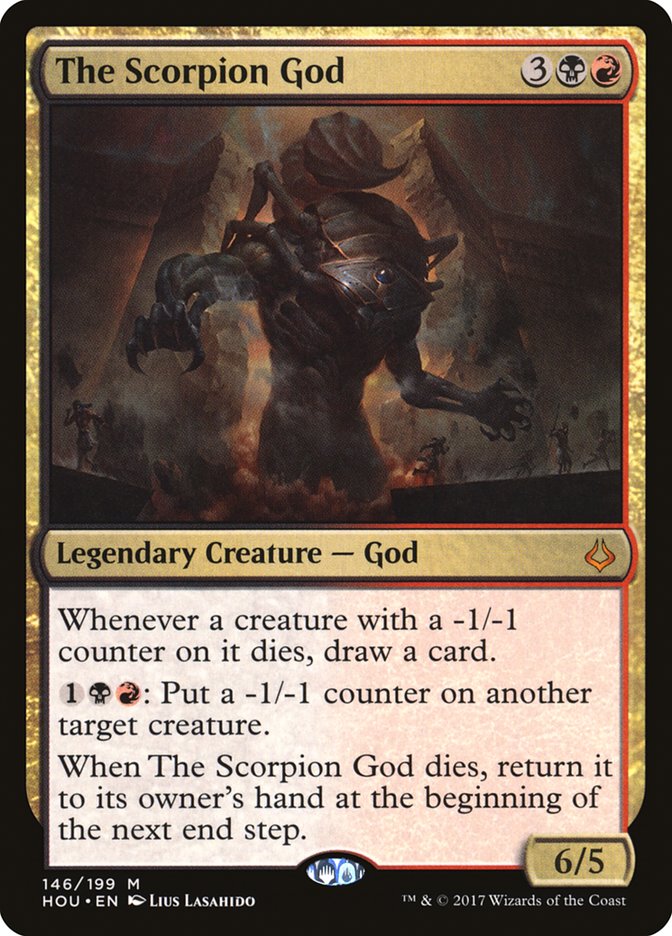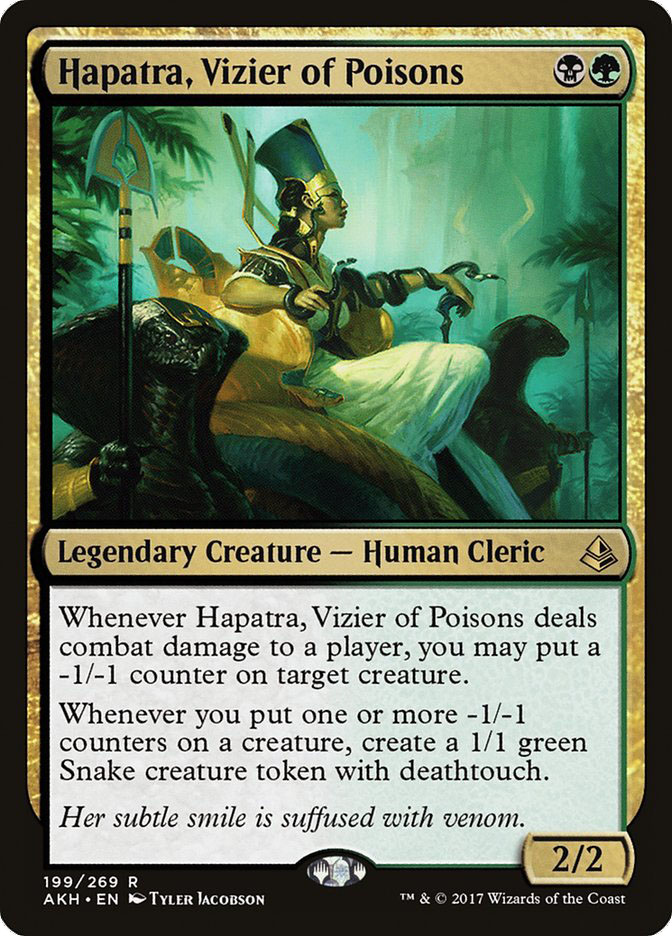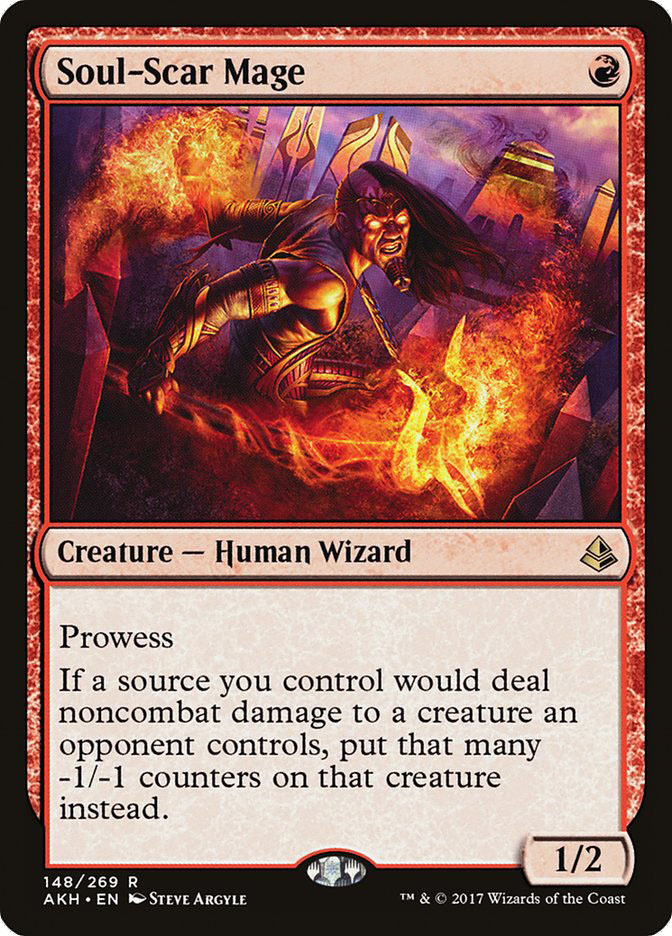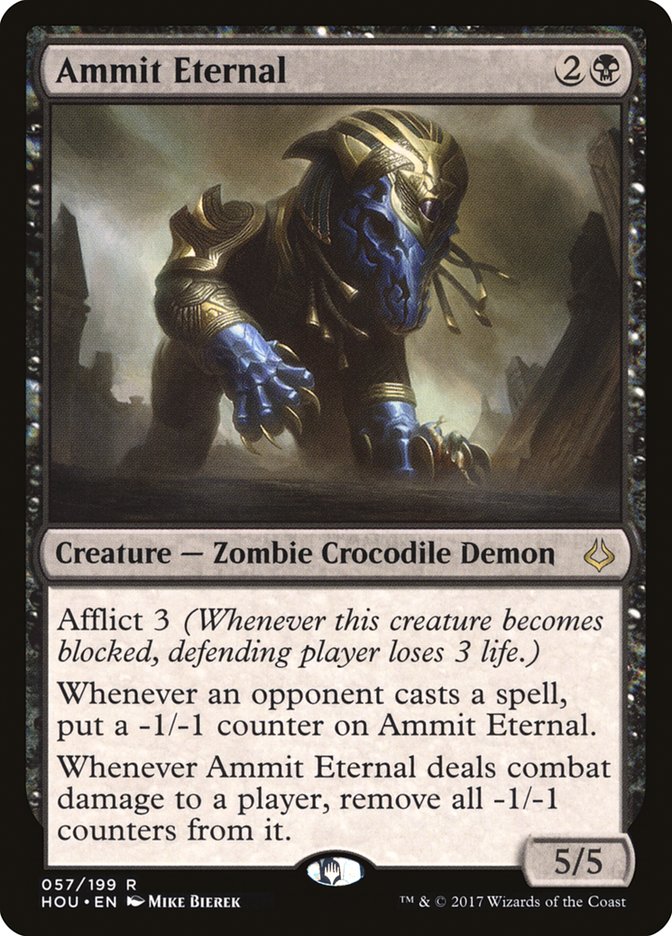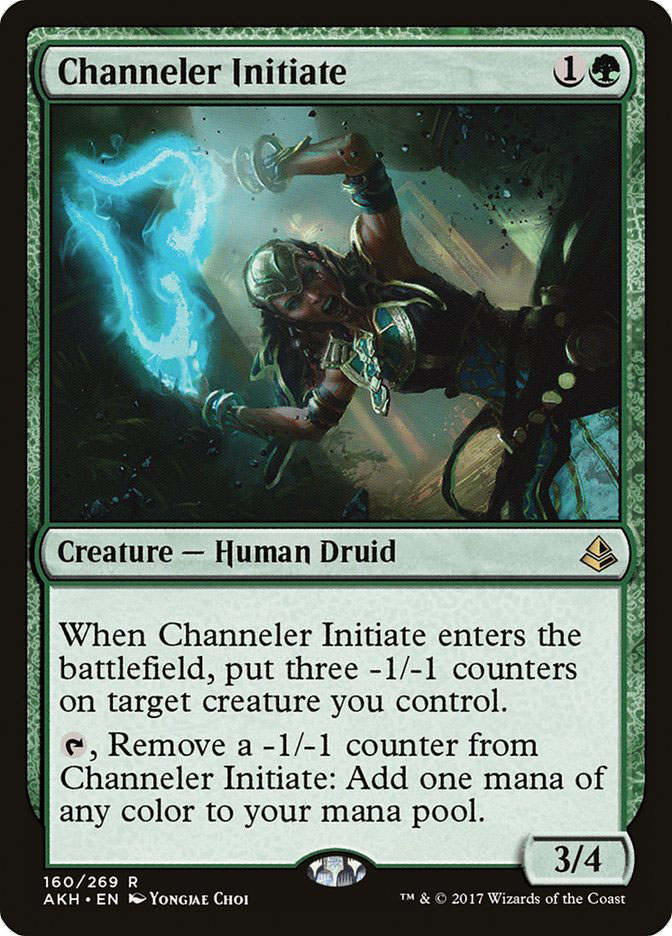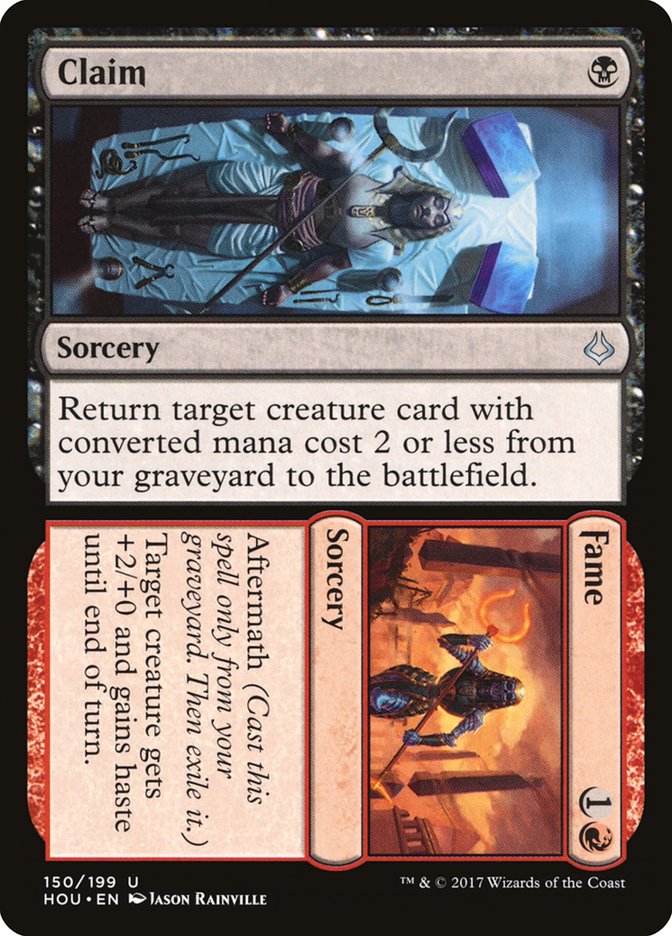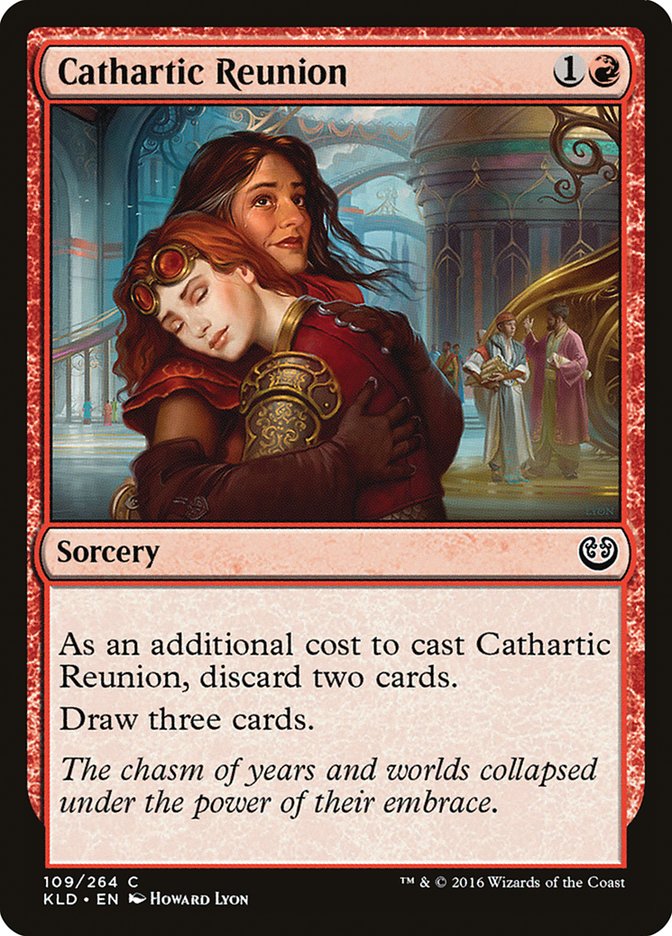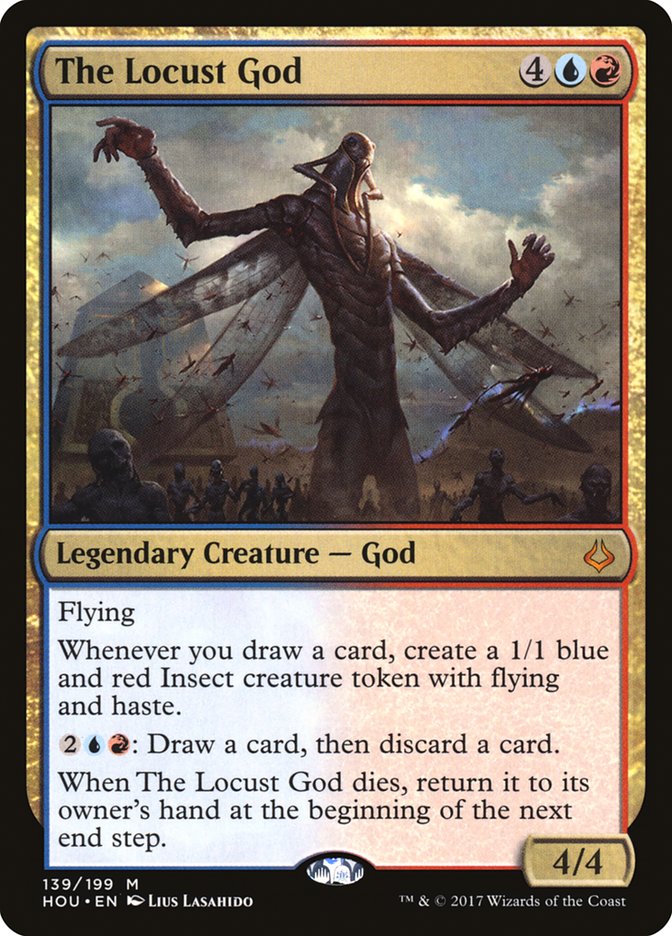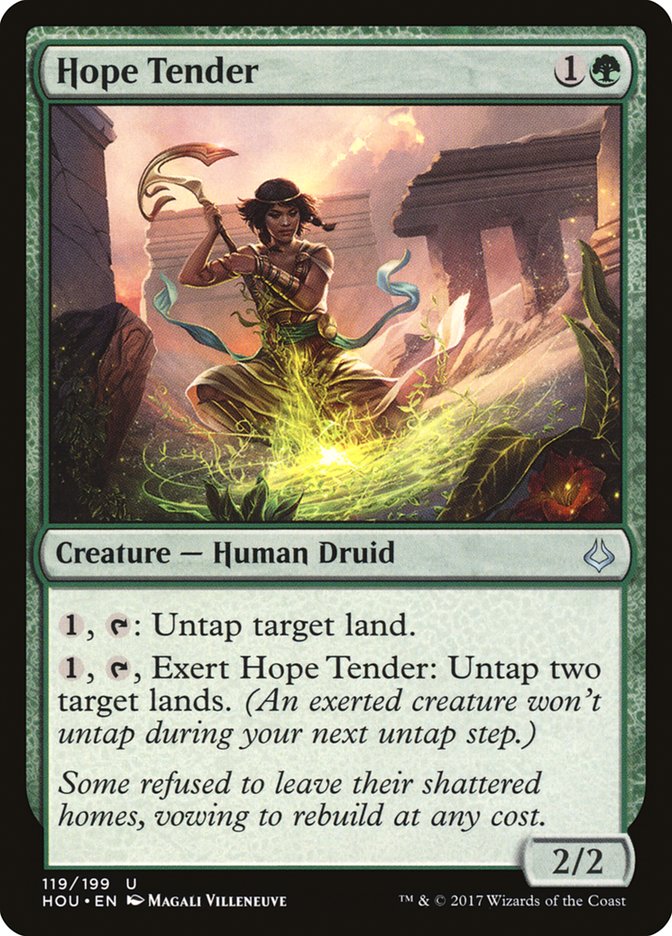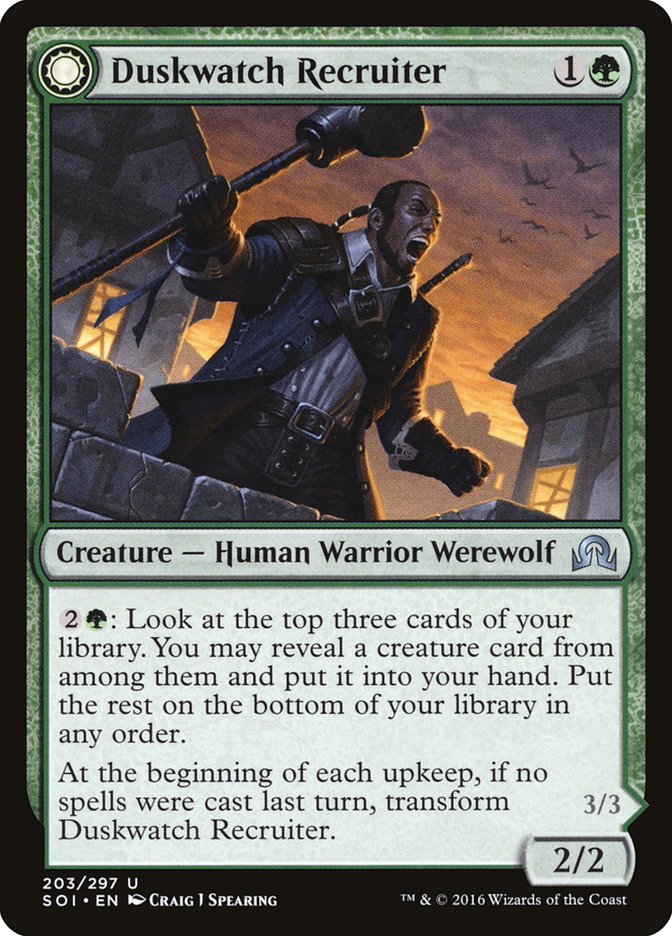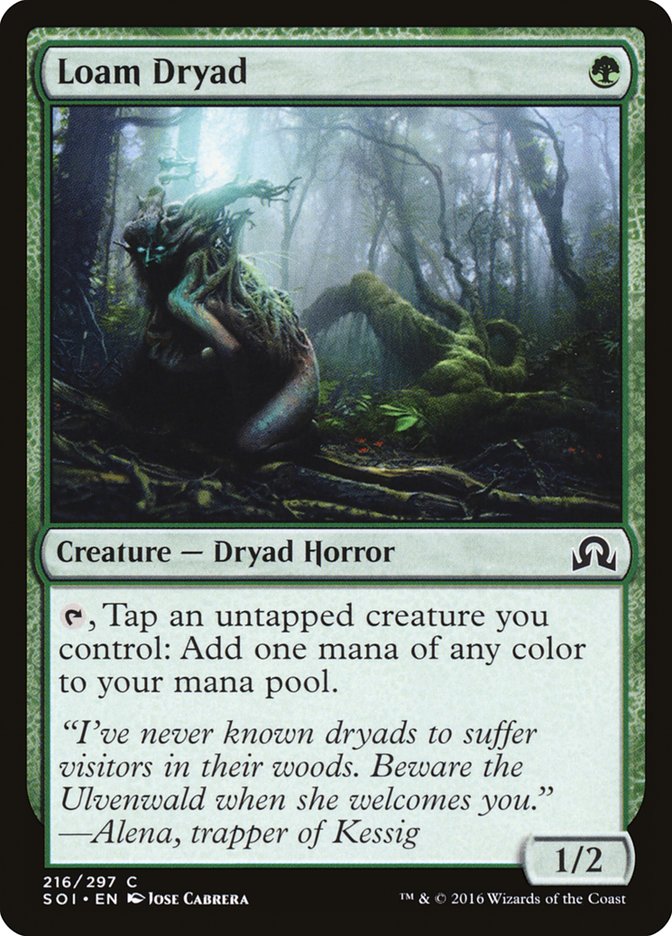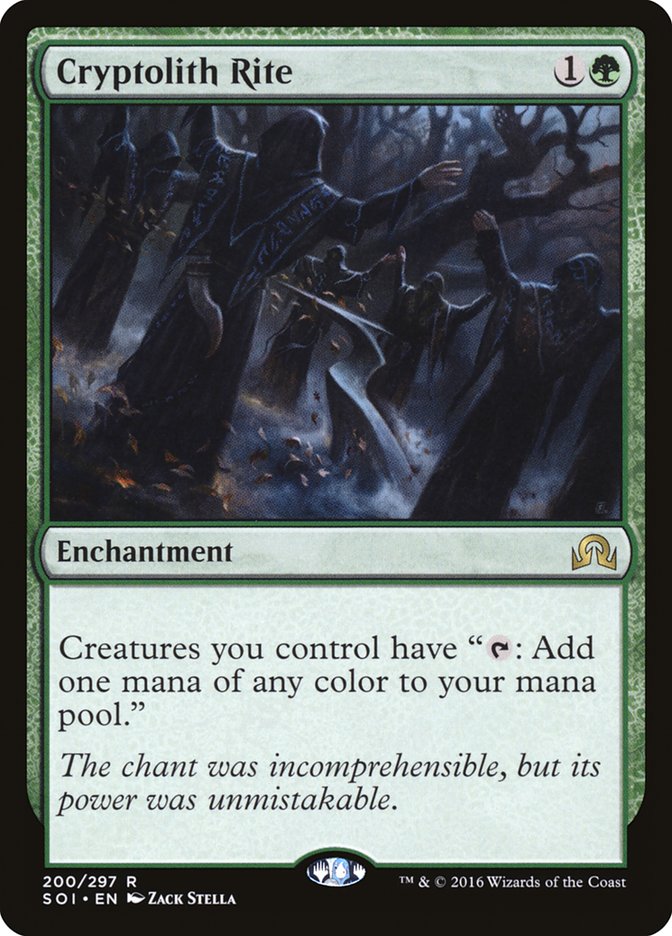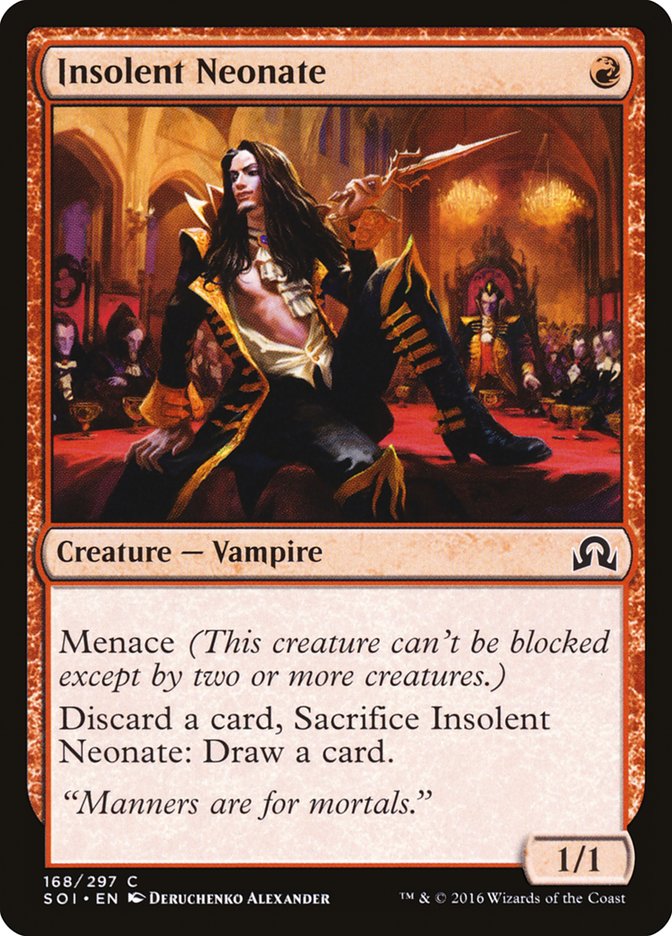Let’s face it: the best part of a new set is the potential for new toys.
Or, you know, new mayhem.
Hour of Devastation thunders into Standard with splashy, high-impact cards; a new take on a solid Limited mechanic, Eternalize; and lots of role-players, just like any small set should have. A critical chapter in the ongoing story of Magic, Hour of Devastation has cards with muscle.
Whenever I look at a new set, I tend to look at it twice, each time with different eyes. When the entire set has been previewed and I’m scrolling through it to glean the best cards the first time, I’m looking for those swingy, hyped, fun cards that I can’t wait to build around, even if the consistency and power level may not quite be there for a long-term, successful deck. I’m looking at those crazy mythics, the cards you pray you pull in your Sealed packs at this weekend’s Prerelease to make a big entrance.
The second time I look at the set is after the Prerelease, when the sobering reality of taking a few licks and seeing some of those brilliant cards in action hits close to home. Then I look at what will actually be a good deck in the new format.
But that’s next week; let’s look at our new Gods, and how each might be worth a deck all on their own. While I think a deck with all three would be fun, I’m pretty sure even I’d find it unwieldly, so we’ll break it down one at a time.
This God was the first to be previewed, and it has all the things I like to see in the top-end of a midrange deck: a big body, inevitability, and a solid mana sink. Even right off the bat, I see a couple different ways to build it, though I think the best way is to make good bodies at a low cost.
Thankfully, we have plenty, and some of them even come with -1/-1 counter interactions to play off the God’s replacement cantrip!
There are a lot of ways you can go. Combined with Soul-Scar Mage, any instant, sorcery, enchantment, planeswalker, or land-based damage plus any lethal removal draws you a card. Execute and Slay were great back in the day as sideboard choices, but this deck lets you be aggressive, power up some strong bodies, and stay on the offense late into the game after your opponent is bled out of resources.
What’s a deck like that look like?
Creatures (19)
- 4 Channeler Initiate
- 3 Hapatra, Vizier of Poisons
- 4 Soul-Scar Mage
- 2 Ruthless Sniper
- 3 The Scorpion God
- 3 Ammit Eternal
Planeswalkers (3)
Lands (26)
Spells (12)
- 4 Shock
- 2 Lightning Axe
- 1 Painful Truths
- 1 Cut
- 2 Heaven
- 2 Claim

A deck like this gets started quickly and never really stops, especially with such an imposing top-end as The Scorpion God. Soul-Scar Mage turns our noncreature damage into permanent wounds, especially with Shock. Magma Spray has been the burn spell du jour thanks to the prevalence of Zombies and Scrapheap Scrounger, but in this deck, Shock is chosen specifically so that I still get to draw a card from The Scorpion God’s trigger. It can go to the face, too, and while it’s not always important, it’s nice to aim at a planeswalker now and again. It’s important to note that with Soul-Scar Mage, Gideon, Ally of Zendikar isn’t such a pain: Lightning Axe just answers him in creature form.
Hapatra, Vizier of Poisons is a great trick for this deck, allowing you to get value each time you add a -1/-1 counter, whether that’s via Ammit Eternal, The Scorpion God, or through damage and a Soul-Scar Mage. Channeler Initiate is the ramp spell that this deck needs and is a perfectly acceptable brawler after it’s been cleared of counters.
Samut, the Tested is a real gem for this deck, thanks to her +1 and -2 abilities. Her double strike is particularly powerful on-curve with overpowered bruisers like Ammit Eternal and is great to push through a brutal The Scorpion God attack, leaving up enough mana to clear away the small blockers. Chandra, Torch of Defiance is formidable, especially if you hit your curve with Channeler Initiate. Even if not, is it too much to hit turn 4 Chandra, plus for two mana, and cast a Soul-Scar Mage and a Shock with Hapatra, Vizier of Poisons up so I can make a Snake to defend her?
Make no mistake: The Scorpion God is a juggernaut, and any deck that can mass-produce on-color mana won’t be easily stopped.
Zombies are already very powerful in this format, and putting lots of them onto the battlefield isn’t a big deal for most decks. This God might have the power to bring two veering Zombie paths, those based around Wayward Servant or Prized Amalgam, into the same deck.
Let’s get into Esper!
Creatures (30)
- 4 Prized Amalgam
- 4 Haunted Dead
- 4 Cryptbreaker
- 4 Sacred Cat
- 2 Temmet, Vizier of Naktamun
- 3 Dread Wanderer
- 4 Wayward Servant
- 3 The Scarab God
- 2 Champion of Wits
Lands (24)
Spells (6)

Delicious decay!
The deck somewhat builds itself, with critical components including Wayward Servant, Haunted Dead, and Prized Amalgam. The Scarab God wants to reanimate anything it’s got, but especially Temmet, Vizier of Naktamun (it can make itself a 5/5 that can’t be blocked); Sacred Cat for its lifelink; and Champion of Wits as a Thoughtflare on a stick. What’s more, if your The Scarab God becomes the target of a nefarious spell, exile the extra copy you discarded and then sacrifice the original to the legend rule. Then it counts itself at upkeep. Nice!
This one was a little clunky, so I wanted to a stab at a slightly different build that got Prized Amalgam onto the battlefield with minimal cost: Claim // Fame.
This is arguably my favorite card from Hour of Devastation; there’s so much potential, and there are so many great targets! While Haunted Dead is great thanks to its instant speed, from-graveyard reanimation, Claim also resurrects a creature and keeps the pedal to the floor, triggering a Prized Amalgam the whole way.
Red is a color that isn’t scared of a bit of nonsense in the graveyard. With enough push, does Grixis have what it takes to put Zombies onto the battlefield with enough regularity to compete?
Creatures (20)
- 4 Relentless Dead
- 4 Prized Amalgam
- 4 Cryptbreaker
- 1 Baral, Chief of Compliance
- 4 Dread Wanderer
- 3 The Scarab God
Lands (25)
Spells (14)
- 3 Cathartic Reunion
- 1 Cut
- 4 Claim
- 3 Refuse
- 3 Consign

In a bold move, we’re stepping away from the tried-and-true Haunted Dead engine and into a land where Claim // Fame and Relentless Dead triggers are all that get us there. Claim // Fame’s second half does a great job to keep The Scarab God relevant late-game. After it dies and returns to your hand, you can cast and haste it up. Baral, Chief of Compliance is a great one-of with ways to reanimate it (and you never want extras), and it keeps the price down on both halves of every aftermath spell. Refuse // Cooperate is better than Geistblast in most applications now, as it’ll both hit harder (if you’re aiming at the face) and actually cast a spell, meaning cost reductions help the copy spell, too.
Risky move, but if it’s Grixis, I’ll try it.
The last God we’ll mention today is perhaps the most contentious; its triggered ability is arguably the easiest to complete, as you’ll do it once a turn even with no other permanents of value on the battlefield. However, it’s one mana more and is poorly sized for its cost. The mana cost matters, as, if it dies, you’re going to be tapping out again to cast it, and in a world of six-drop creatures, I feel like you want to be as much about doing something that sticks, like Torrential Gearhulk.
So, outside of some kind of New Perspectives and/or degenerate combo, is there a way to leverage this new Niv-Mizzet, Dracogenius?
Well, let’s look at a potential plan that goes the wrong direction as far as most red and blue decks go: creatures.
The Locust God’s Insect tokens have haste, which, yes, means they could attack, but it also means they can tap for mana.
Am…am I going crazy? Probably.
Creatures (33)
- 4 Ornithopter
- 1 Mad Prophet
- 2 Duskwatch Recruiter
- 4 Insolent Neonate
- 4 Loam Dryad
- 2 Vizier of the Menagerie
- 4 Vizier of Tumbling Sands
- 2 Samut, Voice of Dissent
- 2 The Locust God
- 4 Hope Tender
- 4 Champion of Wits
Lands (19)
Spells (8)

That’s a lot of creatures, am I right? In my estimation, The Locust God works best in a sea of creatures, and its Insects can soar above them all. As a side note, Soul of the Harvest is currently legal.
Where have your brews gone when it comes to Standard after Hour of Devastation comes to town? Which of the three Gods has the most potential in your mind?


